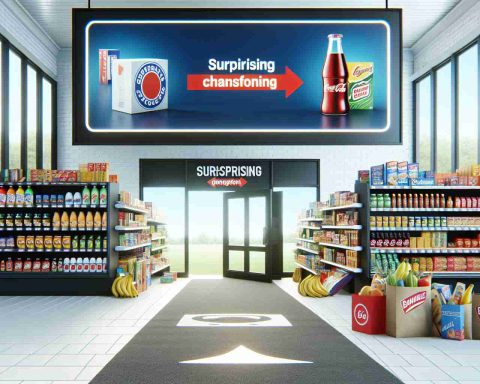Tesla is making strides in the realm of autonomous transportation by introducing a robotaxi service exclusive to its employees. This groundbreaking project, currently being tested in the Bay Area, has generated considerable interest as the company explores the capabilities of driverless technology. Employees can summon a Tesla vehicle via a specially designed app, providing a glimpse into the future of urban mobility.
Safety remains a priority in this initiative. Each vehicle is monitored by a safety driver, positioned behind the wheel to intervene should any issues arise during the ride. Tesla’s CEO has expressed confidence in the autonomous driving software, asserting that it will vastly outperform human drivers by 2025, thanks to continuous advancements in their Full Self-Driving (FSD) system.
This innovative app mirrors existing ride-hailing services but features unique elements tailored to Tesla’s branding. Users interact with a prominent “Summon” button, coupled with an estimated wait time, while a interactive 3D map showcases the vehicle navigating to the passenger.
Additionally, Tesla has unveiled its upcoming Cybercab, which is set to enter production in 2026, signaling a commitment to expanding its autonomous fleet. The intersection of technology and transportation is rapidly evolving, and Tesla’s initiatives are at the forefront of this transformation, promising a revolution in how we think about ridesharing and personal mobility.
Tesla’s Robotaxi Initiative: A Deep Dive into the Future of Autonomous Mobility
Tesla is set to change the landscape of urban transportation with its innovative robotaxi initiative, which aims to leverage cutting-edge autonomous driving technology. While recent developments have focused on employee-exclusive testing in the Bay Area, the implications of this initiative extend much farther.
What distinguishes Tesla’s robotaxi initiative from traditional ride-hailing services? One key difference is the integration of Tesla’s advanced Full Self-Driving (FSD) technology, allowing vehicles to operate without human intervention in specific conditions. This sets the stage for a fully autonomous transportation model that could potentially reduce traffic congestion and emissions by optimizing driving patterns.
Key Questions Surrounding the Initiative:
1. What are the regulatory challenges Tesla faces with its robotaxi service?
– The introduction of robotaxis raises significant regulatory questions. Each jurisdiction will need to address legislation surrounding the operation of autonomous vehicles, including liability in accidents and safety standards. Tesla must work closely with various governmental agencies to ensure compliance and facilitate safe deployment.
2. How will Tesla ensure passenger safety throughout the robotaxi experience?
– While safety drivers will initially be present, the company envisions a future without human oversight. Extensive testing, data collection, and user feedback will be crucial as the FSD technology evolves. Continuous system updates and real-time monitoring will also be key to identifying and resolving potential issues quickly.
3. What are the economic implications of this initiative?
– By transitioning to a fleet of autonomous robotaxis, Tesla hopes to significantly reduce operational costs associated with human drivers. Additionally, a successful rollout could encourage a shift in consumer behavior, leading to greater acceptance of shared transportation solutions over personal vehicle ownership.
Advantages of the Tesla Robotaxi Initiative:
– Reduced Traffic Congestion: Autonomous vehicles can communicate with each other to optimize traffic flow, which could alleviate urban congestion.
– Lower Costs: Operating a driverless fleet could decrease costs related to labor and vehicle maintenance, making ridesharing more affordable.
– Environmental Benefits: Electric robotaxis can contribute to lower carbon emissions and promote sustainable urban transportation.
Disadvantages and Challenges:
– Public Trust and Perception: Gaining the trust of consumers will be crucial. The public’s concerns about safety and the reliability of autonomous systems could hinder widespread adoption.
– Infrastructure Limitations: Current urban infrastructure is not wholly equipped for autonomous vehicles, and significant investment may be needed to ensure safe and efficient operation.
– Job Displacement: The transition to a robotaxi model could threaten jobs in traditional driving sectors, leading to socio-economic challenges.
As the robotaxi initiative moves forward, Tesla continues to demonstrate its commitment to innovation and disruption in the transportation sector. However, careful navigation of the associated challenges is imperative for ensuring a successful and sustainable rollout.
For more information about Tesla’s advancements in autonomous technology, visit their official site: Tesla.









